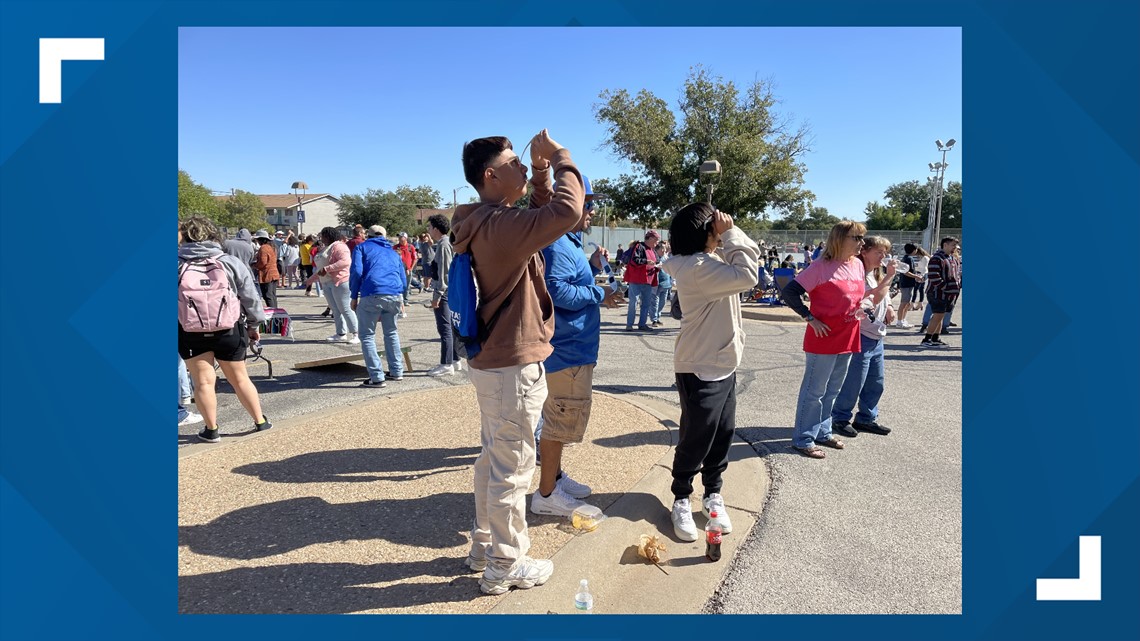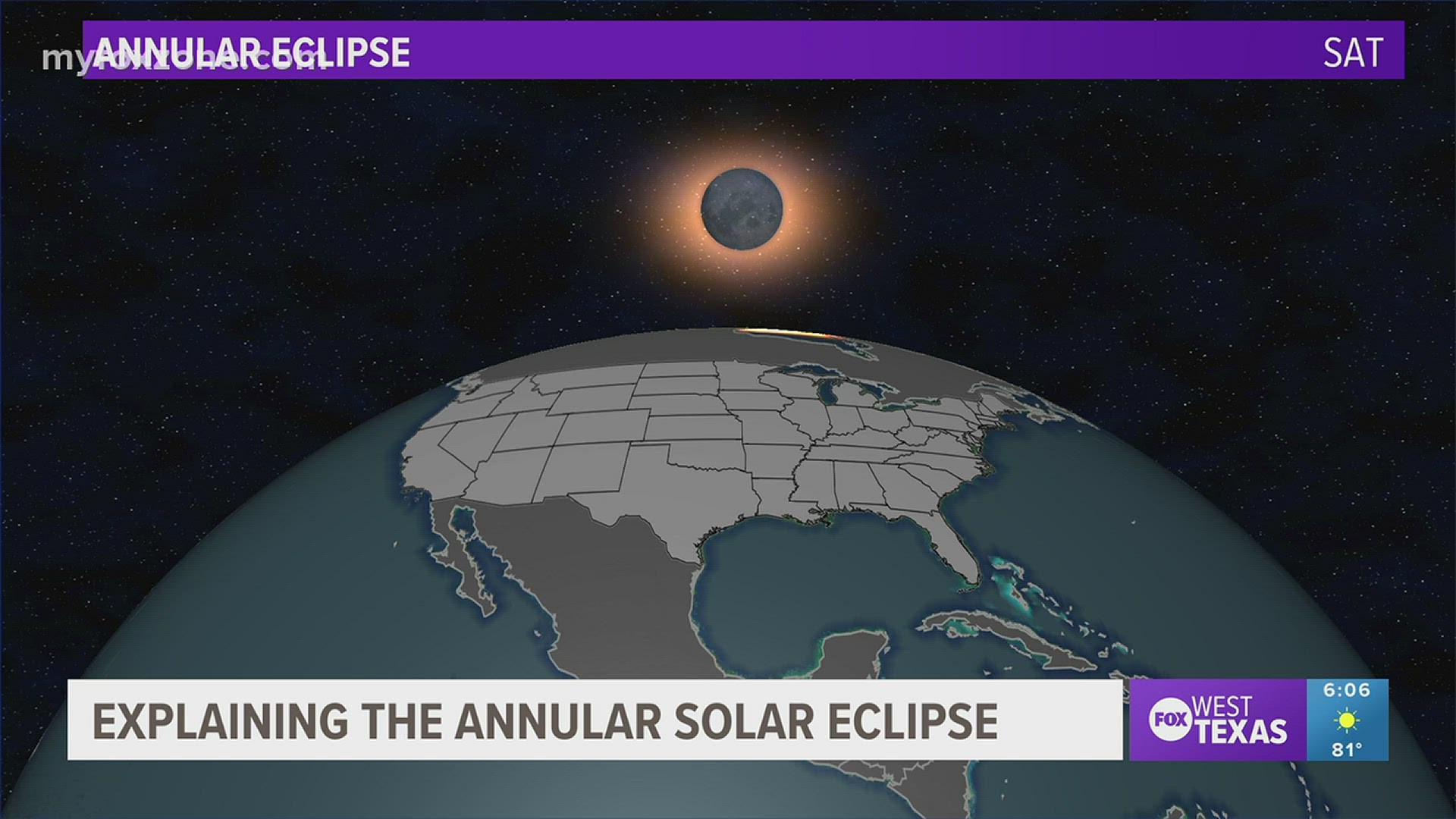SAN ANGELO, Texas — Hundreds of individuals from West Texas and beyond came to Angelo State Oct. 14, wearing special ISO glasses and/or holding boxes to view a rare occurrence: the annular solar eclipse.
Some viewers brought their personal telescopes to witness the Ring of Fire in the Foster Field and university planetarium parking lots, 1600 University Ave. and 2333 Vanderventer Ave. respectively.
"I just love the night sky, astronomy, I always have," attendee Rick Malleck said.
He and his wife drove to San Angelo from Granbury to experience the eclipse firsthand, equipped with a telescope and a camera snapping photos every second.


Malleck's love of the outdoors started at a young age in rural Nebraska where there "wasn't much to do other than go outside and watch the night sky."
That passion carried into his adult life and he wanted to come to San Angelo specifically for the view.
"I wasn't satisfied with just 85%," Malleck said with a laugh.
Another viewer, Bill Cavalieri, is a San Angelo resident originally from New York.
He wanted to experience the eclipse not only for himself, but also for his son who had never seen anything like it.
"Oh, it's for my son. He wanted to see it, I did, too, I haven't seen one in years," Cavalieri said.
The pair arrived to ASU at approximately 10 a.m. where the parking lot soon began to fill with speakers, a DJ and plenty of free ISO glasses.
At approximately 11:47 a.m., participants turned to the sky to witness the rare event as a small ring of orange light was covered almost completely by the darkness of the moon.
The annular solar eclipse isn't set to happen again until 2041, making this year's event one to remember.

